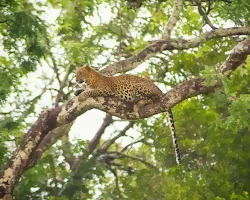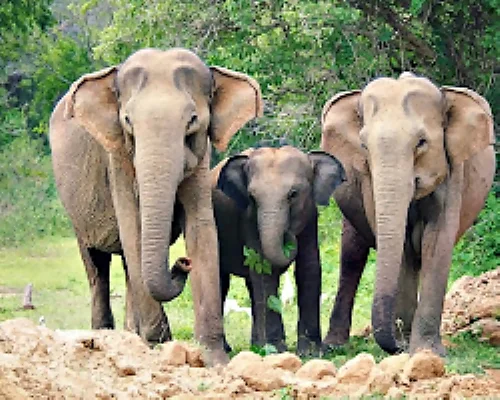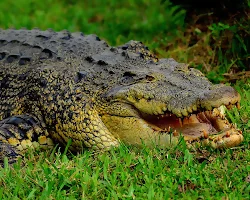Sri Lanka’s Wildlife Wonderland
Yala National Park: Sri Lanka’s Wildlife Wonderland
Sri Lanka, often referred to as the “Pearl of the Indian Ocean,” is renowned for its diverse landscapes, rich cultural heritage, and abundant wildlife. One of the crown jewels of the country’s natural beauty is the Yala National Park, a haven for wildlife enthusiasts, nature lovers, and adventurers alike. Spread across a vast expanse in the southeastern region of Sri Lanka, Yala National Park stands as a testament to the country’s commitment to conservation and its unparalleled biodiversity. In this article, we delve into the wonders of Yala National Park, exploring its history, ecosystem, iconic inhabitants, and the importance of preserving this natural wonder for generations to come.
A Historical Perspective:
It has a history that is as rich and varied as its wildlife. Originally designated as a protected area in 1900 by the British colonial government, it was later declared a wildlife sanctuary in 1938. Over the years, its boundaries were expanded, and it was eventually recognized as a national park in 1940. The park’s historical significance extends beyond its colonial past; it is also home to the ancient Sithulpawwa rock temple, which dates back to the 2nd century BC and stands as a testament to the symbiotic relationship between nature and spirituality.
Ecosystem Diversity:
Spanning over 979 square kilometers, it comprises a mosaic of ecosystems that include dry forests, grasslands, wetlands, and coastal lagoons. This diversity of habitats has led to an astonishing array of flora and fauna, making it one of the most ecologically complex national parks in the world. The park’s landscapes range from arid plains to dense jungles, creating a unique environment where various species have evolved to adapt to these varying conditions.
Iconic Inhabitants:
One of the most compelling reasons to visit it is its incredible biodiversity and the opportunity to encounter some of the world’s most iconic wildlife species. Among the park’s most revered inhabitants are the Sri Lankan leopard (Panthera pardus kotiya) and the Asian elephant (Elephas maximus). The Sri Lankan leopard, a subspecies of the larger leopard family, is a symbol of the park’s conservation efforts. With a population estimated at around 40 individuals, spotting this elusive feline in its natural habitat is a rare and exhilarating experience.
Apart from the leopard and the elephant, it is also home to a diverse range of animals, including sloth bears, crocodiles, deer species, wild boars, and a multitude of bird species. The park’s wetlands and lagoons attract migratory birds, making it a paradise for birdwatchers. Visitors may also encounter jackals, civets, mongooses, and even the Indian pangolin.
Conservation Challenges and Efforts:
Like many protected areas around the world, Yala National Park faces its fair share of conservation challenges. Human-wildlife conflict, habitat degradation, and poaching are among the issues that threaten the park’s delicate balance. Unregulated tourism, at times, has put undue pressure on the ecosystem and its inhabitants.
However, various stakeholders, including the Sri Lankan government, non-governmental organizations, and local communities, have recognized the importance of preserving this natural treasure. Collaborative efforts have been undertaken to mitigate human-wildlife conflict, promote sustainable tourism practices, and raise awareness about the significance of the park’s conservation. These initiatives not only protect the park’s inhabitants but also contribute to the well-being of surrounding communities.
Responsible Tourism:
Yala National Park’s allure has made it a popular tourist destination, contributing to the local economy while also posing potential risks to its fragile ecosystem. To strike a balance between conservation and tourism, responsible tourism practices have been implemented. These include limiting the number of vehicles allowed in the park, enforcing strict guidelines for wildlife observation, and educating visitors about the importance of respecting the animals’ space and habitats.
Preserving the Wonderland:
Yala National Park’s significance extends beyond its borders. Its unique blend of biodiversity, history, and culture makes it a natural wonder that must be preserved for future generations. Through collaborative conservation efforts, sustainable tourism practices, and continued research, the park can continue to thrive as a sanctuary for both wildlife and humans alike.
Leopards in Yala National Park:

Elephants in National Park:


Crocodile in National Park: This photo shows a crocodile in a lake in Yala National Park. Crocodiles are also found in the park, and they can be seen basking in the sun or swimming in the water.
Birds in National Park: This photo shows a variety of birds in Yala National Park.
The park is home to over 200 species of birds, including peacocks, eagles, and storks.
Landscape of Yala National Park:
The landscape of Yala National Park is a mix of grasslands, forests, and lakes. The grasslands are home to herds of elephants, water buffalo, and deer. The forests are home to leopards, sloth bears, and monkeys. The lakes are home to crocodiles, turtles, and a variety of birds.
The landscape of Yala National Park is constantly changing, depending on the season. During the dry season, the grasslands are dry and brown, while the forests are green and lush. During the wet season, the grasslands are green and lush, while the forests are more muted.
The landscape of Yala National Park is a beautiful and diverse place, and it is home to a wide variety of wildlife. If you are looking for a place to experience the beauty of Sri Lanka’s natural world, Yala National Park is the perfect place for you.
In conclusion,
Yala National Park stands as a testament to Sri Lanka’s commitment to biodiversity conservation and the delicate balance between humanity and the natural world. Its diverse ecosystems, iconic inhabitants, and historical significance create an unforgettable experience for visitors. By nurturing and safeguarding this wildlife wonderland, we can ensure that Yala National Park remains a jewel in Sri Lanka’s crown and a source of inspiration for generations to come.

